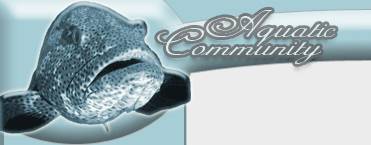Harlequin Bass
Serranus tigrinus

Common name: Harlequin Bass, Harlequin Basslet, Tiger bass, Tiger basslet
Scientific name: Serranus tigrinus
Max size: 4 in / 10 cm (most specimens are smaller)
pH: 8.1-8.4
Salinity: 1.020-1.025
Temperature: 72-78ºF (22-26°C)
The Harlequin bass is a charming albeit aggressive little fish. It has an elongated body with a white base on which black stripes and dots can be found. They can sometimes have a lot of yellow on their body. The upper half of the body is usually bluish while the lower half is white or yellow. There are large differences between different specimens in this species and one Harlequin bass does not necessarily look like another.
The Harlequin bass is native to the Caribbean Sea and the tropical Western Atlantic. Many of the fishes found in the trade have been collected in the waters of Puerto Rico.
This species is highly recommended to marine beginners as it very hardy. It is best kept in a "fish only" or a "fish with live rock" tank as they are not 100% reef safe. They often eat small invertebrates and fish, but will usually leave corals alone. It can be kept with animals that is too big to eat with the reservation that the Harlequin bass is a aggressive fish and it should only be kept with fish that are though enough to handle that aggression. They are only seldom aggressive towards fish that are bigger than they are.
Harlequin bass should be acclimated for 3 hours before released in your aquarium.
Harlequin Bass care and aquarium setup
If you want to keep the Harlequin bass you will need an aquarium of at least 20 gallon / 120 L in volume. A smaller aquarium is not suitable. This is for keeping one fish; if you want to keep several Harlequin basses you will need a larger aquarium as they are territorial. The aquarium should be decorated with a sand bed in which this fish can dig. (They love to dig.) The aquarium should also contain a lot of hiding places in nocks and caves. They prefer a darker tank and might therefore not be suitable to keep with corals even if they leave them alone.
Try to keep the water quality high and stable even if this is a hardy species that can handle less than ideal conditions. The Harlequin bass prefers a well circulated tank.
Feeding Harlequin Bass
The Harlequin bass is a carnivore and should as such be fed a high protein diet. Although this species sometimes can be trained to accept marine pellets you should assume that they won’t. Most specimens can be feed a diet consisting of live food, chopped up sea food and frozen food. It is important to give them a varied diet to make sure they get all the nutrients they need.
Breeding Harlequin Bass
Very little is known about breeding this fish in aquariums. It is an egg laying species and research is being carried out to learn more about how they spawn in the wild; research that might give the information needed to breed this species in aquariums. If you want to try to breed Harlequin bass it is recommended that you get a large aquarium with a lot of hiding places as this is an aggressive fish.
Bass Articles:
Chalk Bass – Serranus tortugarum
